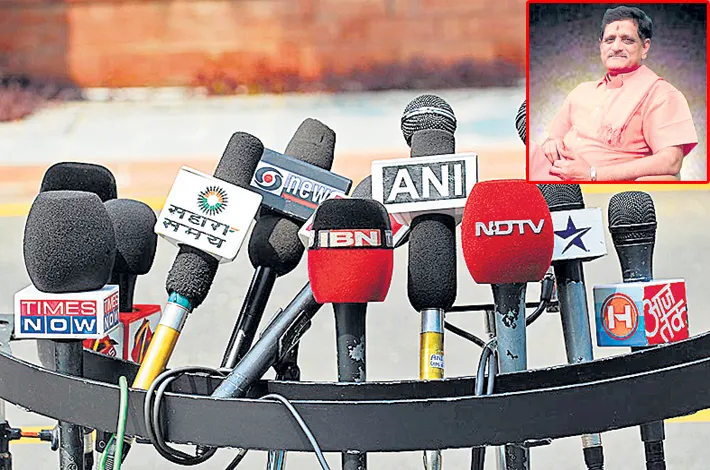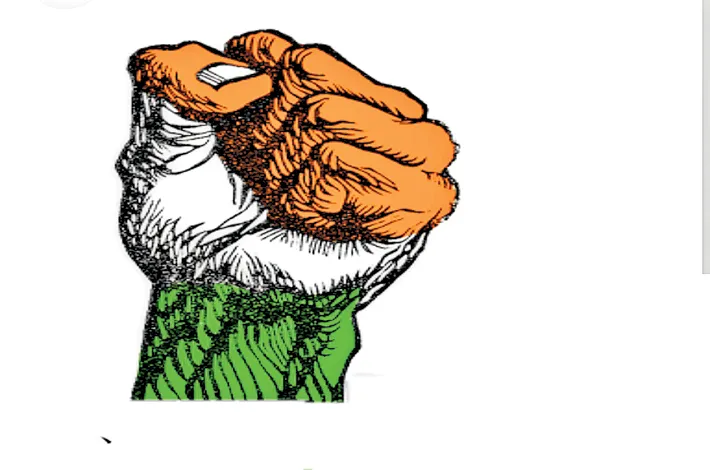India’s media stopped defending democracy
21-08-2025 12:00:00 AM

Once a pillar of accountability, India’s mainstream press has morphed into a network of propaganda outlets—serving power instead of the people
In most functioning democracies, the press is expected to act as the fourth pillar of accountability—to question power, expose corruption, and amplify the voice of the people. In India today, that pillar has crumbled. What remains of the mainstream media is little more than a chorus of courtiers, serving not the public interest but the whims of political masters and corporate owners. The transformation is stark. India once produced journalists of integrity and courage—James Augustus Hicky, Raja Ram Mohan Roy, Tushar Kanti Ghosh, Kasturi Chalapathi Rao, K.Ramarao, Prabhash Joshi, Rajendra Mathur, Kuldeep Nayar, Sham Lal, Durga Das, B.G. Verghese, H.K. Dua, Girilal Jain, Narla Venkateswararao, Ganesh Shankar Vidyarthi—figures who risked careers and lives to uphold the truth. That lineage has all but vanished.
In their place, India’s media landscape is now dominated by oligarchs with dubious origins, many of whom built their first fortunes not in newsrooms but in the flesh trade, real estate speculation, or crony capitalism. Having laundered their reputations through business and politics, they now preside over newspapers, television channels, and digital platforms that masquerade as independent institutions. In reality, these conglomerates have become policy shapers, kingmakers, and protectors of the status quo. The consequences are devastating. Constitutional institutions are compromised, democracy is diluted and the public sphere is suffocated. Citizens are left with propaganda in place of journalism, infotainment in place of analysis, and silence in place of truth. Internationally, this erosion of media independence has turned the world’s largest democracy into a subject of ridicule rather than respect.
The crisis is on full display today. The Election Commission of India, once celebrated as a neutral arbiter of the world’s largest electoral process, now stands accused of murdering democracy in plain sight. It is opposition leaders—Rahul Gandhi among them—who attempt to raise the alarm, staging protests and demanding accountability. Yet, the mainstream media responds with near-total silence. No investigative headlines. No prime-time debates. No urgency. Why? Because most of India’s media houses have chosen their side. Their executives, editors and star anchors have traded integrity for access, conscience for contracts, truth for survival. The result is a nation where democratic backsliding is not merely unchallenged but actively disguised.
India’s citizens are left to rely on a shrinking space of independent digital outlets, grassroot reporters, and international observers to document the decline. But even these voices are hounded, censored, or delegitimized by a state that increasingly treats dissent as treason. The uncomfortable truth is this: Indian journalism, as a mainstream institution, is dead. What survives is a network of propaganda machines, controlled by power and wealth, incapable of holding authority accountable. For the world’s largest democracy, this is not merely a domestic concern. It is a warning. When the media ceases to be a watchdog and becomes the lapdog of power, democracy itself is imperilled. And in India, that peril is no longer theoretical—it is already here.
— Suvera (S Venkateshwar Rao is a political analyst)








